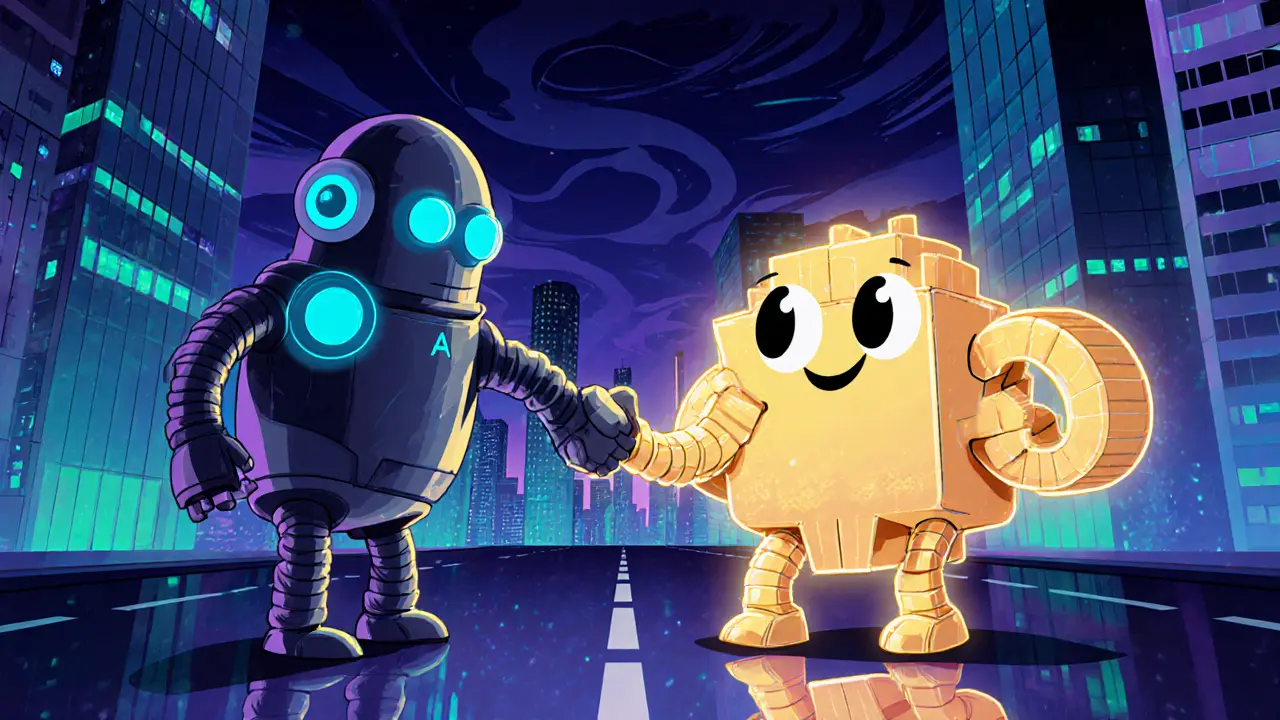AI Blockchain Integration: How AI Meets Distributed Ledgers
When working with AI blockchain integration, the blend of artificial intelligence techniques with blockchain's decentralized infrastructure. Also known as AI‑enabled ledger, it lets machines read, verify and act on on‑chain data without human bottlenecks. This synergy fuels faster decision‑making, smarter asset management and new business models that were impossible a few years ago.
One of the core pillars of this synergy is smart contracts, self‑executing code on a blockchain that enforces rules automatically. By feeding real‑time analytics into smart contracts, developers can trigger actions based on market trends, user behavior or risk signals. For example, a DeFi protocol can auto‑adjust loan rates when a machine‑learning model flags rising volatility. In short, AI blockchain integration encompasses smart contracts that react to AI insights.
Why Machine Learning is the Engine Behind the Magic
The second essential piece is machine learning, algorithms that improve their performance by learning from data patterns. When you combine ML models with on‑chain data, you get predictive tools that can forecast token price swings, detect fraudulent transactions, or recommend optimal gas fees. These predictions feed directly into smart contracts, creating a feedback loop where the blockchain supplies fresh data and the AI refines its outputs. This relationship shows that AI blockchain integration requires machine learning to turn raw ledger events into actionable intelligence.
Another trend reshaping the landscape is the rise of modular blockchain, a layered architecture that separates data availability from execution logic. Projects like Celestia prove that you can offload heavy data storage to a dedicated layer while keeping the execution layer lightweight. This separation gives AI models faster access to verified data without throttling the main chain. Consequently, modular blockchain influences AI blockchain integration by providing scalable, low‑latency pipelines for AI‑driven applications.
Beyond finance, AI blockchain integration is opening doors in entertainment and ticketing. NFT ticketing, the use of non‑fungible tokens to represent event tickets on a blockchain benefits from AI by predicting demand, optimizing pricing, and preventing scalper bots. An AI model can scan resale markets, flag suspicious activity, and automatically adjust ticket transfer rules embedded in smart contracts. This link illustrates how AI blockchain integration boosts NFT ticketing, making events both safer and more profitable for organizers.
Putting these pieces together, you can see a clear chain of influence: modular blockchain provides the data backbone, machine learning turns that data into insights, smart contracts execute those insights, and NFT ticketing showcases a real‑world use case. Each entity relies on the others, forming a network of dependencies that power the next wave of decentralized applications. Readers who dive into the articles below will find step‑by‑step guides, security tips, and concrete examples that bring these concepts to life.
Ready to see how AI blockchain integration reshapes crypto security, token launches and real‑time airdrops? Scroll down and explore the curated collection – from seed‑phrase safeguards to AI‑driven exchange reviews – and start building smarter, faster, and safer blockchain solutions today.

AI Blockchain Integration: How AI and Blockchain Combine for Secure, Automated Systems
Caius Merrow Apr, 4 2025 7Explore how artificial intelligence and blockchain combine to create secure, automated systems, covering architecture, benefits, real‑world uses, challenges, and future trends.
More Detail